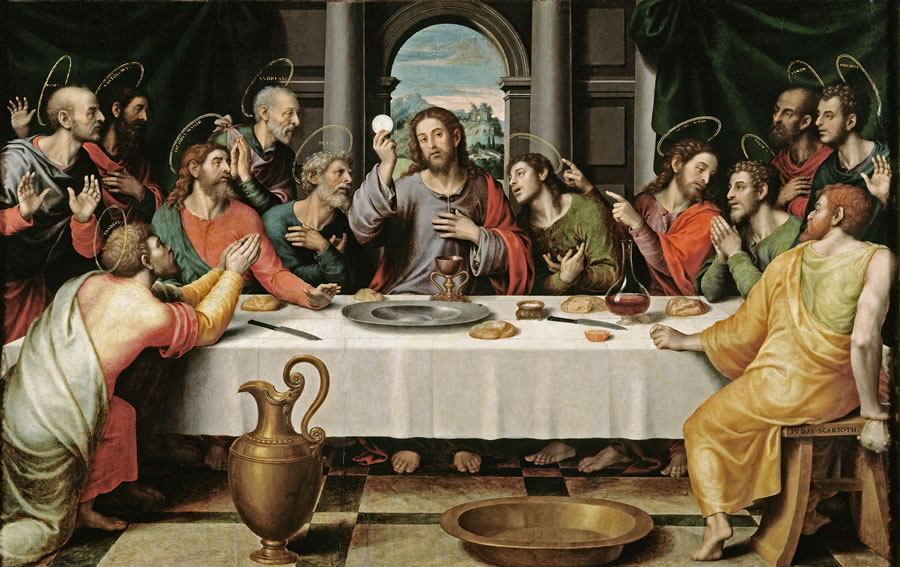
Solemnity of Corpus Christ
06-02-2024Weekly ReflectionFr. Bing ColasitoIn the first reading, the blood of animals symbolizes a covenant-making ritual. Sprinkling the blood on the people means God and the people are making the covenant together. The blood has two symbolisms: 1.) Kinship: God and Israel now share the same blood, and 2.) Death: May my blood be shed, like these animals, if I fail to keep my covenant commitment. On the other hand, in the New Testament, the blood of Jesus Christ seals the new covenant. The Holy Eucharist is the sacrifice of the new covenant where His flesh is real food, and His blood is the true drink of the New Covenant, the cup of salvation.
After giving the Ten Commandments, The LAW, the Lord made a covenant with the people. The people agree to follow and obey the LAW and live by its statutes. Whatever God commands, they will follow. The sprinkling of the blood of animals on the people is the ritual symbol of the ratification of the covenant. From that time on, the people of Israel became a covenanted people.
Before the hour comes for the glory of the Son of Man, Jesus asked His Apostle to prepare the Passover meal. The Jews celebrate the Feast of the Passover annually to commemorate their liberation from Egypt. The law requires all adult male Jews to go to Jerusalem; for this reason, Jesus went to Jerusalem together with His disciples. They follow the ritual of celebration called the Passover Seder, similar to the Catholic Eucharistic Celebration.
In an older covenant, people offer bread and wine from their first fruit as a sign of sacrifice and thanksgiving to the creator. This sacrifice receives a new meaning on the eve of the Exodus by eating unleavened bread during the Passover meal to commemorate their haste departure from Egypt. It became the Todah, a thanksgiving to God for His act of deliverance. The manna in the desert reminds the Jews how God takes care of their physical needs by sending bread from heaven. The Last Supper was the institution of the Eucharist, giving a new and definitive meaning to the sacrifice of bread and wine.
In context, the institution of the Eucharist during the Passover meal gives it a richer meaning. After the Last Supper, Jesus, Passover to the Father: Jesus passing over to His Father by His death and resurrection, the new Passover, is anticipated in the Supper and celebrated in the Eucharist, which fulfills the Jewish Passover and anticipates the final Passover of the Church in the glory of the Kingdom.(CCC 1340)
With the new Passover, more than its commemorative ritual or celebration is its expiatory aspect. The second reading cites the expiatory effect of the Eucharist. The sprinkling of the blood of animals in the Temple worship does not remove or forgive sins because only the blood of Jesus Christ is the ransom for all our sins.
The Holy Catholics highly value the Sacrament of the Eucharist as the REAL PRESENCE of the Body and Blood of Christ. For this reason, CCC 1324 says: The Eucharist is the source and summit of the Christian life. Eucharistic presence starts from birth, life, journey, sufferings, sins, struggles, death, and SALVATION. How do we prepare ourselves fully to participate worthily and meaningfully in the Eucharist?
This Solemnity invites us to welcome the abundant fruits of the Eucharistic celebration as weadore Him, truly present, Body, Blood, Soul, and Divinity in the Sacrament of His love, the Most Holy Eucharist.
BACK TO LIST